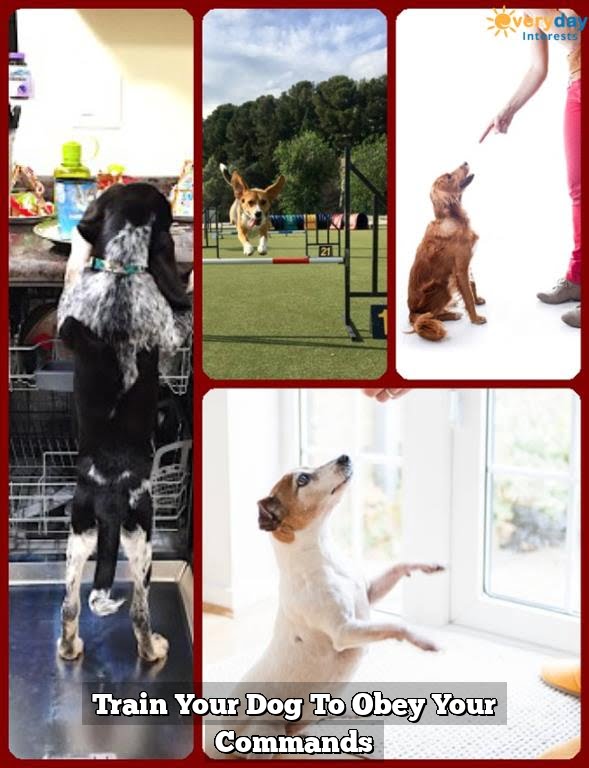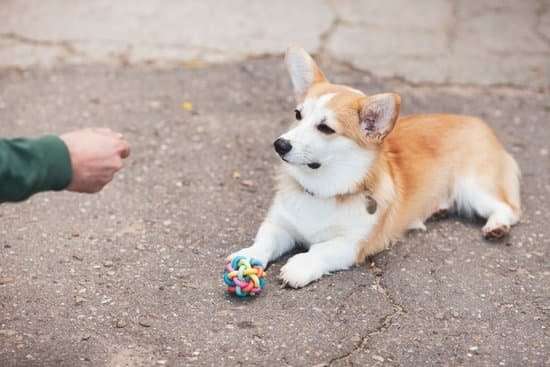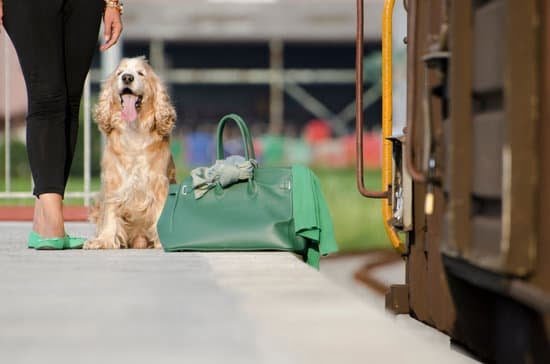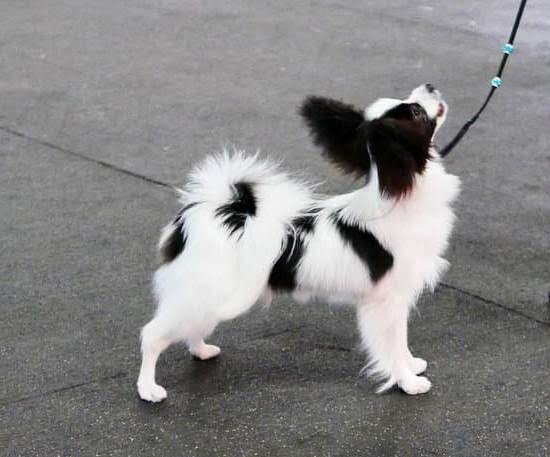Training your dog to weave through poles can be an exciting and rewarding experience for both you and your furry friend. It not only provides mental and physical stimulation for your dog, but it also strengthens the bond between the two of you. This introductory section will cover the importance and benefits of weave pole training, as well as provide a guide on how to get started.
Weave poles are an essential element in agility training for dogs. They require the dog to navigate a series of upright poles arranged in a straight line or in a slalom pattern. Weave pole training helps improve your dog’s agility, coordination, and focus while also providing a fun and challenging activity.
In this article, we will delve into the step-by-step process of training your dog to master weave poles. From setting up the right equipment and space for training to introducing the weave poles and using positive reinforcement techniques, we will guide you through each stage of the training journey. So, whether you are new to dog agility training or looking to enhance your dog’s skills, this comprehensive guide will help you achieve success in weave pole training.
Getting Started
When getting started with training your dog on the weave poles, it is essential to prepare the right equipment and space for their training. First, you will need to invest in a set of quality weave poles that are suitable for your dog’s size and breed. It is important to choose a set of poles that are sturdy, adjustable, and safe for your dog to maneuver through.
Once you have secured the weave poles, you will need to find a suitable space for training. Ideally, you should have access to a large, open area with plenty of room for your dog to move around and practice weaving through the poles. It is also important to ensure that the training area is free from distractions and hazards that could impede your dog’s progress.
Additionally, it is helpful to gather some basic training supplies such as high-value treats or toys, a leash and collar, and possibly some cones or markers to help set up the weave pole course. Having these items on hand will make the training process more efficient and enjoyable for both you and your dog. By preparing the right equipment and space for training, you are setting the stage for a successful weaving journey with your furry companion.
As you prepare to train your dog on the weave poles, remember that patience and consistency are key. Every dog learns at their own pace, so be sure to tailor your training approach based on your dog’s individual needs and abilities. With the right equipment and space in place, you can now move forward with teaching basic obedience commands and introducing the weave poles to your eager pup.
By preparing properly before embarking on this exciting journey, you set both yourself as well as your fur baby up for success as they begin learning how to train yourself in weaving poles.
Teaching Basic Obedience Commands
Before embarking on weave pole training, it is crucial to lay the groundwork by teaching your dog basic obedience commands. This will not only establish a strong foundation for further training but also ensure that your dog is responsive and well-behaved during the weave pole exercises. Here are some essential obedience commands to focus on before introducing your dog to weave poles:
1. Sit: Teaching your dog to sit on command is fundamental for discipline and control. This command can be used to keep your dog in place before starting the weave pole training or while adjusting their position during the exercise.
2. Stay: The “stay” command is essential for maintaining your dog’s position while setting up the weave poles or when you need them to pause before proceeding with the training.
3. Come: Having a reliable recall is crucial for guiding your dog through the weave poles and ensuring they stay engaged and focused on you as their handler.
Once your dog has mastered these basic commands, they will be better prepared to handle the intricacies of weaving through the poles with precision and agility.
In addition to these basic commands, it is important to practice leash manners and good behavior around distractions before moving onto weave pole training. By establishing a solid obedience foundation, you will set yourself up for success when transitioning into more advanced agility exercises with your canine companion.
Introducing the Weave Poles
Once your dog has mastered basic obedience commands and is comfortable with agility equipment, it’s time to introduce the weave poles. This is an essential skill in agility training that requires patience, consistency, and positive reinforcement. Here’s a step-by-step guide on how to properly introduce the weave poles to your dog.
The first step in introducing your dog to the weave poles is to familiarize them with the equipment. Set up the weave poles in an open space and allow your dog to explore them at their own pace. Encourage them with treats and praise as they investigate the poles, but avoid forcing them to interact with the equipment if they seem hesitant.
Next, begin by teaching your dog how to enter and exit the weave poles. Use a treat or toy to lure them through the first two poles, allowing them to follow the object while you guide them from behind. Gradually increase the distance between each pole as your dog becomes more confident with navigating through them.
As your dog becomes more comfortable with weaving through the poles, start incorporating verbal commands such as “weave” or “poles” to cue them on what you want them to do. Pairing these commands with consistent hand signals will help reinforce their understanding of what is expected of them during weave pole training.
Following these steps will ensure that your dog is properly introduced to weave pole training in a positive and encouraging manner. With patience, consistency, and plenty of rewards, you’ll set a solid foundation for more advanced agility training down the line.
| Step | Description |
|---|---|
| Familiarize Dog with Weave Poles | Allow your dog to explore the weave poles at their own pace while offering treats and praise. |
| Teach Entry and Exit | Use treats or toys to guide your dog through the first two weave poles, gradually increasing distance. |
| Incorporate Verbal Commands | Pair verbal cues like “weave” or “poles” with consistent hand signals as your dog weaves through. |
Positive Reinforcement Techniques
When it comes to training your dog to weave poles, positive reinforcement techniques are key to motivating and encouraging your furry friend. Using rewards and encouragement can make the training process more enjoyable for both you and your dog. In this section, we will discuss the importance of positive reinforcement and provide you with tips on how to effectively use rewards to achieve successful weave pole training.
The Importance of Positive Reinforcement
Positive reinforcement is a powerful training method that involves rewarding your dog for exhibiting desirable behavior. When it comes to weave pole training, using positive reinforcement can help your dog associate the weaving motion with a positive experience, making them more eager and motivated to perform the task. By using rewards such as treats, praise, or playtime, you can create a strong bond with your dog while also reinforcing their learning.
Using Rewards Effectively
When using rewards for weave pole training, it’s important to choose high-value treats or toys that your dog finds particularly enticing. This will increase their motivation and excitement during the training sessions. Additionally, timing is crucial when it comes to giving rewards. Make sure to offer the reward immediately after your dog successfully completes the weave poles to reinforce the desired behavior.
Encouraging Your Dog
In addition to using rewards, providing verbal praise and enthusiastic encouragement can also be highly effective in motivating your dog during weave pole training. Use an upbeat tone of voice and shower your pup with praise when they navigate through the poles correctly. This positive reinforcement will boost their confidence and make them more willing to continue practicing. With consistent use of rewards and encouragement, you’ll soon see progress in your dog’s weave pole performance.
Progressive Training
Once your dog has mastered the basic weave pole execution, it’s time to progressively increase the difficulty and speed of their performance. This is an essential step in solidifying their skills and ensuring they can navigate the weave poles with both accuracy and speed. By gradually increasing the difficulty and speed, you are setting your dog up for success in competitions or simply enjoying a fun activity together.
Gradually Adding Distance and Angles
One way to increase the difficulty of weave pole training is to gradually add distance between the poles. Start with the poles set close together, then as your dog becomes more confident, begin to increase the spacing between them. Additionally, you can introduce different angles into your weave pole course to challenge your dog’s ability to maneuver through them effectively.
Introducing Distractions
Another important aspect of progressive training is introducing distractions. While initially training your dog on weave poles, it’s likely that you practiced in a controlled environment free from many distractions. Now is the time to gradually introduce distractions such as other animals, toys, or noises nearby. This will help prepare your dog for real-life scenarios where they may need to stay focused on weaving despite various distractions.
Incorporating Speed Training
As your dog becomes more proficient at navigating through the weave poles, it’s important to start incorporating speed training into their routine. Use verbal cues and hand signals to encourage your dog to pick up their pace while maintaining accuracy through the weave poles. Incorporating speed into their training will help them become more agile and responsive when maneuvering through complex courses.
By progressively increasing the difficulty and speed of weave pole execution, you are not only enhancing your dog’s skills but also deepening your bond with them through continued training and teamwork. Remember to always be patient and consistent with your training methods as you work towards achieving seamless coordination between you and your furry companion.
Troubleshooting Common Challenges
Training your dog to navigate weave poles can come with its fair share of challenges. It’s not uncommon for dogs to struggle with this particular skill, so troubleshooting common challenges is a crucial part of the training process. Here are some common issues that may arise when training your dog on weave poles, and tips on how to address them:
1. Pole Avoidance: Some dogs may try to avoid the weave poles altogether, making it difficult to get them to even attempt going through the poles.
2. Knocking Poles: Another common issue is when a dog knocks over the weave poles while attempting to navigate through them.
3. Lack of Speed or Accuracy: Dogs may also struggle with executing the weave poles at a fast pace or with precision, which is essential for competition-level performance.
To address these challenges, consider incorporating the following strategies into your training routine:
– Always use positive reinforcement when training your dog on weave poles, offering plenty of praise and rewards for successful attempts.
– Break down the training process into smaller, manageable steps to help your dog build confidence and understanding at each stage.
– Be patient and consistent in your approach, as mastering weave pole training can take time and practice.
By being proactive about addressing these common challenges, you can set your dog up for success in mastering weave pole navigation. Remember that every dog learns at their own pace, so stay patient and keep a positive attitude throughout the training process.
Advanced Training Tips
Once your dog has mastered the basics of weaving through poles, you can start to focus on advanced training tips to enhance their accuracy, speed, and consistency in weave pole performance. Advanced training is essential for competitive agility trials or simply for improving your dog’s skills and coordination.
To enhance accuracy in weave pole performance, consider using offset poles to challenge your dog to stay focused and maintain a straight line while weaving. Set up the poles at various angles and distances, requiring your dog to adjust their pace and stride length accordingly. This will help them develop better spatial awareness and improve their ability to navigate different course configurations.
Speed is another crucial aspect of weave pole performance. To increase your dog’s speed, practice setting up shorter distances between the weave poles and gradually decrease the spacing as they become more proficient. You can also use verbal cues or hand signals to encourage faster transitions between each pole. Remember to always prioritize safety and comfort, ensuring that your dog does not feel stressed or pressured during training.
Consistency is key in weave pole performance, as it ensures that your dog can execute the maneuver accurately every time. Practice regularly with varying distractions such as toys or treats placed around the poles to mimic real-life scenarios. Additionally, incorporate weave pole sequences into longer agility courses to reinforce consistent performance in a dynamic environment. Consistent positive reinforcement and rewards will also motivate your dog to maintain their focus and precision while weaving through the poles.
These advanced training tips will help take your dog’s weave pole performance to the next level, ultimately leading to improved accuracy, speed, and consistency in their agility skills. By incorporating these strategies into your training routine, you can continue to challenge and stimulate your dog while fostering a deeper bond based on trust and communication.
By implementing these techniques consistently and patiently working with your dog through any challenges that arise throughout this process – all elements we’ve touched upon in prior steps – you are sure find success through this rewarding journey on how to train your dog weave poles.
Conclusion
In conclusion, training your dog to navigate weave poles is an enjoyable and rewarding journey that strengthens the bond between you and your furry companion. The process of teaching your dog this skill not only provides mental and physical stimulation for them but also promotes better obedience and focus. By following a structured training program and using positive reinforcement techniques, you can effectively guide your dog through the weave pole training process.
As with any type of dog training, patience, consistency, and dedication are key factors in achieving success. It is essential to set realistic expectations and be prepared to address any challenges that may arise during the training process. Remember to celebrate small victories along the way and stay persistent in your efforts. With time and practice, your dog will become more confident and proficient at weaving through the poles.
Lastly, always prioritize the safety and well-being of your dog throughout the training journey. Take breaks when needed, monitor their physical condition, and seek professional guidance if necessary. With determination and proper guidance, you can successfully train your dog to master weave poles while building a stronger relationship with them. So keep practicing, stay positive, and enjoy the journey of watching your furry friend master this impressive skill.
Frequently Asked Questions
How Do You Train a Dog to Use a Weave Pole?
Training a dog to use weave poles involves breaking down the process into small steps and using positive reinforcement. Start by introducing the poles slowly and rewarding the dog for successfully navigating through them.
What Age Should You Start Weave Pole Training?
Weave pole training can begin at around 12-18 months of age for most breeds. It’s important to wait until the dog is physically developed enough to avoid any potential injury from the agility training.
What Are the Rules for Dog Weave Poles?
The rules for dog weave poles in agility competitions typically involve the number of poles, spacing between them, and the proper entry and exit points. Dogs must navigate through the poles correctly without skipping or missing any. Accuracy and speed are important factors in these competitions.

Welcome to the blog! I am a professional dog trainer and have been working with dogs for many years. In this blog, I will be discussing various topics related to dog training, including tips, tricks, and advice. I hope you find this information helpful and informative. Thanks for reading!





